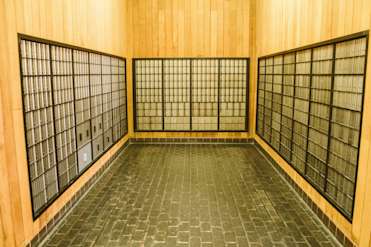
Starting your own business
Alternatives to a PO box address for your small business
Simple, smart accounting software - no commitment, cancel anytime

GROWING YOUR BUSINESS
Managing your cash flow effectively is an important aspect of operating a business. A business’ operating environment can be unpredictable, and cash helps keep it running.
Having a sufficient cash flow allows a business to meet surprise costs and expenses.
Not having enough cash will act as a drag on businesses and slow down production. However, too much cash can also be expensive for your business due to ‘opportunity cost’.
For example, having too much cash on hand can be bad for your business because it limits how much money you can make. When you have money that's not being used, it costs you money because you could be making more money by investing it or paying off loans.
Here’s how to manage your cash flow to help you achieve your company goals.
First, what is the definition and meaning of cash flow in business?
Cash flow is the movement of money in and out of a business or an individual's finances. It refers to how much cash is generated or used during a specific period of time.
Positive cash flow is good for your business, while negative cash flow can cause financial issues. It’s essential to manage your cash flow.
Cash flow management involves:
reducing excessive amounts of cash in hand and utilising cash effectively
maintaining an optimum balance of cash to meet planned and unexpected costs
managing cash flows at all times e.g. cash disbursements and receipts
Why is cash flow management important for a business? We explain below.
To run a business effectively, you need to make sure you have enough money going in and out at the correct times. Having a cash management strategy and techniques in place, where you plan ahead and control your cash flow, can help you stay financially stable and meet objectives.
A business needs cash for meeting both its short and long-term business needs. These include financing current assets, fixed assets or making payments for operating expenses.
Whether assets and liabilities are either current or non-current makes a big difference.
Cash, or an asset that gets converted into cash within 12 months, is known as a current asset. For example, accounts receivable or inventory are both current assets.
Fixed assets can include things like machinery and equipment, as they’ll be used for years.
Because cash is used to pay off current liabilities, it makes sense for a business owner to collect current assets for their cash management needs. Planning long-term cash flow is important, but dealing with any short-term cash flow problems now ensures you stay open.
Earning profits also does not translate to having sufficient cash to run a business – you can still face cash shortages on a day-to-day basis. Idle cash can also hinder earning potential.
With all this, cash planning is essential for reducing the chances of excess or too little cash.
A cash budget is a statement summarising the expected cash coming in and out of a business, over a projected period of time. It provides both the timings and amounts.
This helps a business to predict its future cash needs and plan ahead accordingly.
Businesses use cash management techniques to manage their cash inflows and outflows.
Basically, a business should try to pay bills slower and get paid faster – for example, by collecting money from customers as soon as possible and reducing time waiting for money owed. This ensures there’s less money sitting around and it gets used more efficiently.
Cash collections (inflows) and cash disbursements (outflows) comprise three things:
Accounts receivable
Accounts payable
Difference between accounts receivable and payables
Accounts receivable refers to the amount of cash owed to your business for uncollected credit sales. This can get larger and lead to a cash shortage if you add new customers.
For example, if you made £10,000 in credit sales and customers typically paid within 30 days, but then you increased credit sales to £12,000 in 2019 and customers now take 45 days to pay on average, your accounts receivable (money owed to you) will likely increase.
This would be because the new customers take longer to pay on average, meaning your business takes longer to receive the cash inflow. This can make it difficult to generate the cash you need each month to cover your operating costs. Also, increasing credit sales can mean higher costs to be paid, so it’s important to consider how many sales you want.
Business owners also need cash for payroll, pay vendors and debt payments (if applicable).
An accounts payable balance represents the bills you need to pay within the next year, and that balance is a current liability. If your cash inflows aren’t enough to cover this, you would need to access a line of credit or raise more capital through a stock or bond offering.
A business must have an ideal cash balance to meet day-to-day obligations and provide a cushion to businesses in unforeseen circumstances. To find an ideal, you should consider:
The risk associated with maintaining a given cash balance
The returns expected as an outcome of maintaining
If a business has a small cash balance, it can suffer from cash shortages and not be able to meet its expenses. It would then need to either sell its marketable securities or borrow.
If a business keeps its cash balance high, it can maintain its liquidity. However, it may lose out on the opportunity to earn interest income on excess cash (an opportunity cost).
To avoid excess or deficit cash, you need to maintain an optimum level of cash balance:
Transaction costs + the risk of maintaining a small amount of cash balance = the opportunity cost associated with having an idle cash balance
Idle cash needs to be invested correctly, with a business deciding what proportion of cash to invest into marketable securities that can easily be converted into cash. Excess cash, left after meeting the working capital requirement, may change depending on the season.
In case of unexpected events that need money, a business may want to keep some cash handy – this is called a ‘precautionary cash balance’. It can be hard to know exactly how much money may be needed, so instead of keeping excess in a bank account, it’s best to invest in securities like stocks and bonds that can be easily sold for cash if required.
They’re called marketable securities because they can be bought and sold easily, making them a good way to earn some return on investment and keep excess cash available.
As well as investing idle cash in marketable securities, a business can also undertake short-term credit if needed. However, choosing to invest in marketable securities or getting a loan will depend on the company’s policy with regard to short-term and long-term strategy.
Manage your accounts receivable balance by enforcing a formal collection policy.
Your accounting software should group your receivables based on when each invoice was issued. You can set up a collections process to email or call clients to ask for payment.
Offer customers a discount, for example, if they pay an invoice within 10 days. You’ll collect slightly less cash, but some customers will pay faster which will improve your cash inflow and help you meet objectives.
If you offer customers a 5% discount, you may lose 5% of the revenue generated, but receiving the cash sooner may eliminate the need to borrow money and pay interest.
Managing inventory is a balancing act, you need to keep a supply of finished goods on hand if you’re a manufacturing business. Carrying an inventory balance allows you to fulfil orders fast, so clients aren’t left waiting, while still minimising the money tied up in your inventory.
Smart inventory management requires time and effort, and you need to analyse:
The amount of inventory carried in past years
The number of sales generated
The number of sales lost due to out of stock
This analysis helps to estimate the amount of inventory needed by the company.
Developing a strong relationship with your largest customers also helps inventory management, as you can predict their future needs and thus pre-plan your own.
You can dramatically improve your cash flow management by using accounting software.
This helps you to collect cash faster and speed up the time it takes to transfer payments into the company bank account. If you can speed up your cash inflows by even a few days, this can dramatically improve your cash position. You can monitor your cash flow too.
Building cash flow management strategies and techniques requires time and effort, but it pays off in the long run. We hope you know how to manage your cash flow effectively – forecasting your cash needs, speeding up collections, and avoiding borrowing money.
Find out more about the importance of cash flow management on our Cash Flow Forecasting page.
This content is for information purposes only, is provided free of charge and is intended to be helpful to a wide range of businesses. Because of its general nature, the information cannot be taken as comprehensive and they do not constitute and should never be used as a substitute for legal, accounting, or tax advice. Additional information and exceptions may apply. No assurance is given that the information provided is comprehensive, accurate or free of errors. Intuit does not have any responsibility for updating or revising any information presented herein. Any reliance you place on information found on this site or linked to on other websites will be at your own risk. You should consider seeking the advice of independent advisers and always check your decisions against your normal business methods and best practice in your field of business.
9.00am - 5.30pm Monday - Thursday
9.00am - 4.30pm Friday